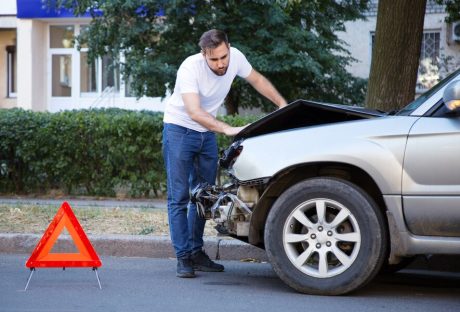Georgia is a great place for people who like to walk. Many cities and neighborhoods dedicate their roads to walking communities.
Downtown Atlanta has walking paths for residents, employees, visitors, and customers.
The Metro Atlanta area is also full of pedestrian-friendly parks. And let’s not forget that the rural parts of the Metro area have abundant hiking trails.
All this makes Georgia seem very pedestrian-friendly. Not necessarily. While Georgia may encourage walking, pedestrians are only sometimes safe.
How Safe are Pedestrians in Georgia?
In 2019, Smart Growth America conducted an urban planning and development study. Atlanta was included in their research, including a portion dedicated to how pedestrian-friendly certain states are. How did Georgia rank? Put together by The Embry Law Firm, let’s look at some statistics:
- Overall, the state ranked as the 6th most dangerous state for pedestrians.
- The Metro Atlanta area ranked as the 25th most deadly region for pedestrians.
- From 2008 to 2017, 1,782 pedestrians were victims of hit and run by cars across the state.
- That accounts for 1.76 pedestrian deaths per 100,000 people (about the seating capacity of the Los Angeles Memorial Coliseum).
- The annual average number of pedestrian deaths in Georgia is 184. The national average is 1.55.
- From 2011 to 2015, pedestrian deaths increased by 58%.
- 78% of pedestrian injuries and fatalities occurred at “non-intersection” locations.
- 52% of pedestrian injuries and deaths occurred while the individual was waiting to cross a road.
This data means that Georgia—and especially Metro Atlanta—may be friendly to pedestrians, but our state’s drivers are not.
Is the State Trying to Protect Pedestrians?
Knowing what we do about pedestrian accidents, injuries, and deaths across the state, we must consider whether our state leaders are taking action to reduce those numbers and save lives.
The answer is that, yes, state leaders are working on initiatives that could reduce the number of pedestrian accidents and deaths.
Georgia has adopted one major initiative called “Vision Zero.” This initiative comes from the idea that traffic fatalities can be reduced to zero through engineering, education, and enforcement (the 3 E’s).
Vision Zero holds to the notion that humans make mistakes. Therefore, a road system is required to ensure these mistakes do not lead to severe injuries or death.
Numerous countries and cities across the United States have adopted Vision Zero. Many have seen a dramatic improvement in their traffic fatality rates, including pedestrian deaths.
One of Vision Zero’s goals is to enhance road safety for everyone—drivers, bicyclists, motorcyclists, pedestrians, and public transit users.
What Can Pedestrians Do to Stay Safe?
Pedestrians can do their part in the fight to reduce the number of pedestrian accidents and fatalities each year. The Georgia Governor’s Office of Highway Safety recommends the following:
- Always walk on the sidewalk if possible. If there is no sidewalk, walk close to the left side of the street. When walking on the street, facing traffic.
- Always cross the road at a crosswalk if one is available.
- Stay in the street and attempt to dash in between traffic.
- Pedestrians are required to obey traffic signals. Look for signals that say “walk” or “don’t walk.”
- When walking near the street, wear bright clothing or use reflective gear.
- Encourage your children not to play in the street, even in quiet neighborhoods.
You can’t control the actions of others, but as a pedestrian, you can take measures to keep yourself safe and out of harm’s way.
Whether you are commuting to work in Atlantic Station or walking a trail along the Chattahoochee River, walking is a favorite pastime for Georgians.
It is important, however, that all of us do our part—whether walking or driving—to protect ourselves and others around us. This is the best way to improve safety for all of Georgia.
Just Moving to Georgia (Road Safety Guide)
Georgia has reliable hours and an easy position. Therefore, you might end up here for your work purposes. However, when it comes to road safety, you need to be a little more careful with your approach.
To begin with, you will have to be wary of road safety measures and how to protect yourself against rash driving.
Now, here’s a thing that you want to remember, and that’s—crossing streets;
Cross streets at marked crosswalks or intersections; if none are available, keep well on the road to be seen. Stand clear of vehicles in case they roll backward.
Be Seen: Wear bright or reflective clothing if you are walking or biking in low lighting conditions, especially at night.
Make eye contact with drivers in the vehicle waiting for you to cross in front of them.
Avoid Distractions: Don’t use your phone or listen to music at a high volume while walking. Be aware of everything and everyone around you.
Educate Children: It is not just about your safety, especially if you are relocating your family alongside the job. Teach children to follow road safety precautions while crossing the roads.
Plan Safe Routes: Choose well-lit and less busy routes for walking. Know the normal traffic patterns around where you live.
Final Note
Whether you’re new to Georgia or you’ve lived here for some time, remember that safe walking can sometimes be your responsibility.
We have a combination of urban and rural settings in which to enjoy walking, but because of that fact, we must be aware of some simple tips to keep ourselves safe. Yes, appreciate other drivers, but when in doubt, always come back to his rulebook!
Read Also:






















